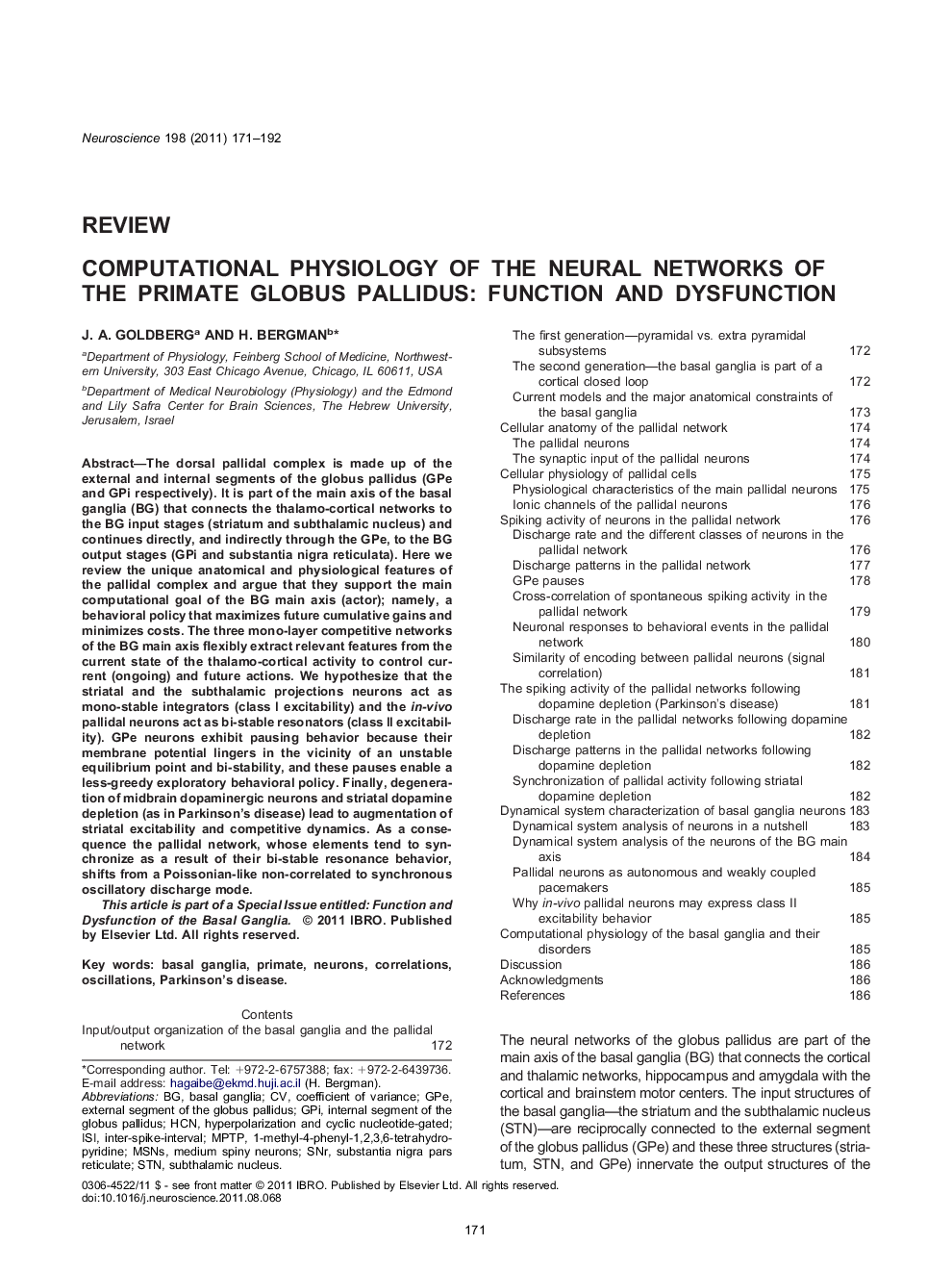| کد مقاله | کد نشریه | سال انتشار | مقاله انگلیسی | نسخه تمام متن |
|---|---|---|---|---|
| 4338719 | 1614878 | 2011 | 22 صفحه PDF | دانلود رایگان |

The dorsal pallidal complex is made up of the external and internal segments of the globus pallidus (GPe and GPi respectively). It is part of the main axis of the basal ganglia (BG) that connects the thalamo-cortical networks to the BG input stages (striatum and subthalamic nucleus) and continues directly, and indirectly through the GPe, to the BG output stages (GPi and substantia nigra reticulata). Here we review the unique anatomical and physiological features of the pallidal complex and argue that they support the main computational goal of the BG main axis (actor); namely, a behavioral policy that maximizes future cumulative gains and minimizes costs. The three mono-layer competitive networks of the BG main axis flexibly extract relevant features from the current state of the thalamo-cortical activity to control current (ongoing) and future actions. We hypothesize that the striatal and the subthalamic projections neurons act as mono-stable integrators (class I excitability) and the in-vivo pallidal neurons act as bi-stable resonators (class II excitability). GPe neurons exhibit pausing behavior because their membrane potential lingers in the vicinity of an unstable equilibrium point and bi-stability, and these pauses enable a less-greedy exploratory behavioral policy. Finally, degeneration of midbrain dopaminergic neurons and striatal dopamine depletion (as in Parkinson's disease) lead to augmentation of striatal excitability and competitive dynamics. As a consequence the pallidal network, whose elements tend to synchronize as a result of their bi-stable resonance behavior, shifts from a Poissonian-like non-correlated to synchronous oscillatory discharge mode.This article is part of a Special Issue entitled: Function and Dysfunction of the Basal Ganglia.
▶Three mono-layer competitive networks constitute the main axis (actor) of the basal ganglia. ▶The striatal and the subthalamic projections neurons act as mono-stable integrators (class I excitability). ▶The in-vivo pallidal neurons act as bi-stable resonators (class II excitability). ▶GPe neurons exhibit pausing behavior that supports exploratory behavior because they are closer to the unstable equilibrium point and bi-stability regime. ▶The bi-stable resonance behavior boosts oscillatory synchronization of pallidal neurons following dopamine depletion.
Journal: Neuroscience - Volume 198, 15 December 2011, Pages 171–192